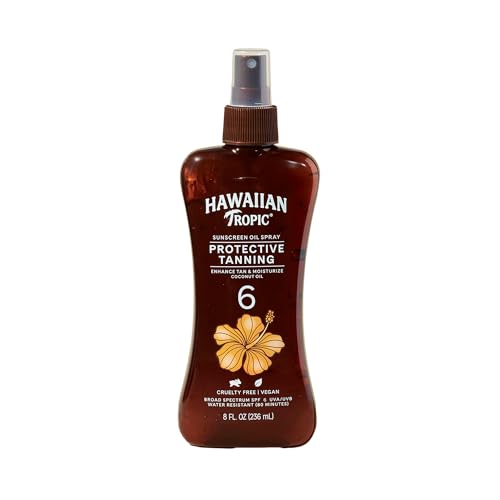
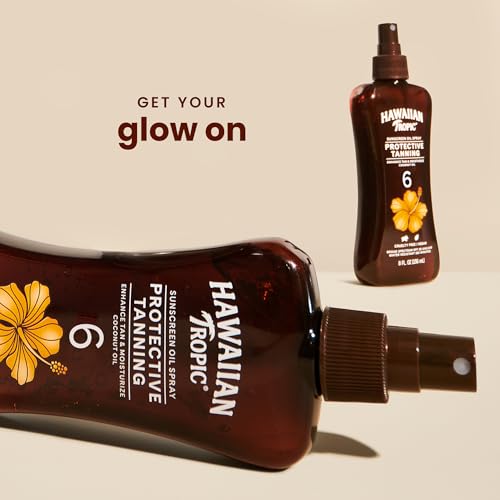
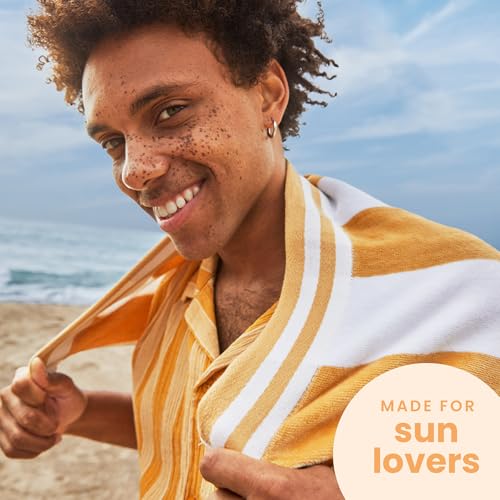
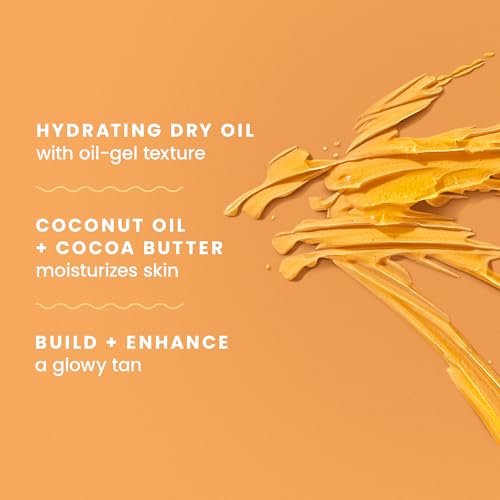
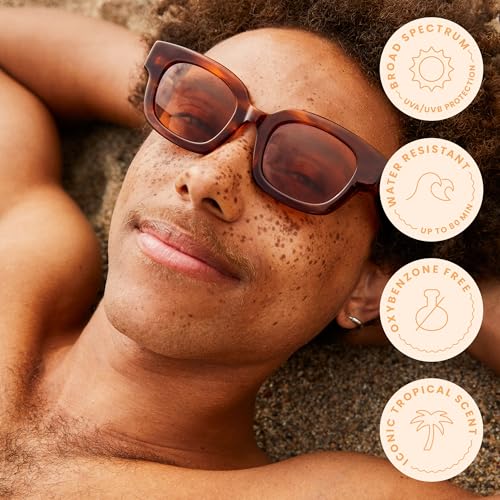
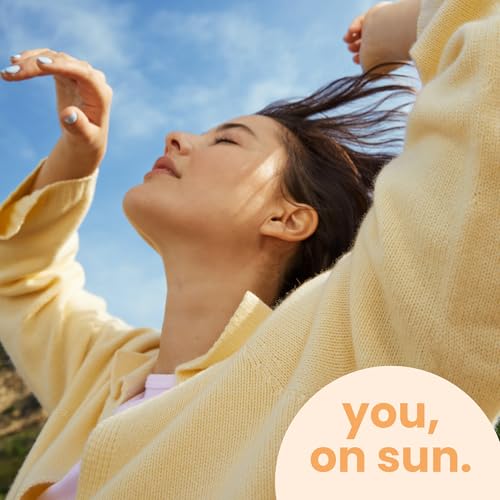
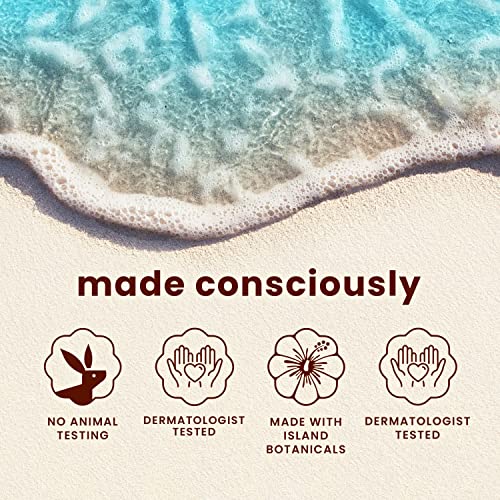
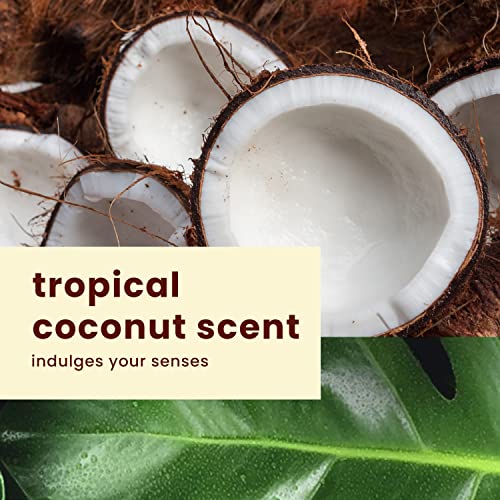
Hawaiian Tropic Island Tanning Oil Spray - Hydrating SPF 6, Oxybenzone-Free, 8oz


Fragrance
High RiskFragrance refers to a mixture of aromatic compounds used in products to provide scent. It is commonly listed as 'fragrance' or 'parfum' on product labels and can serve various functions, including enhancing user experience and masking undesirable odors.
Sustai Insights
Fragrance offers functional benefits by improving product appeal; however, it poses significant health risks, notably a high likelihood of causing allergies and allergic contact dermatitis. Environmental risks include potential pollution and endocrine disruption, though its overall carcinogenicity is low. Regulatory bodies have noted concerns regarding its use, leading to a high-risk classification. Safe usage practices should be observed, and alternatives such as natural essential oils are recommended for those sensitive to synthetic fragrances.
Avobenzone
Medium RiskAvobenzone is an organic compound commonly used in sunscreens and skincare products for its ability to absorb ultraviolet (UV) radiation. It provides broad-spectrum protection against UVA rays, helping to prevent skin damage caused by sun exposure. However, it is known to degrade when exposed to sunlight unless stabilized with other ingredients.
Sustai Insights
Avobenzone effectively protects against UVA rays, making it a valuable ingredient in sun care products. However, it has moderate use restrictions due to its instability in sunlight, which can lead to enhanced skin absorption and potential irritation. Regulatory bodies restrict its use in certain formulations, categorizing it as having low concerns for cancer, allergies, and reproductive toxicity. Environmental risks include its potential as a pollutant, though it is not highly bioaccumulative. Overall, the ingredient poses medium risk, and users should adhere to product recommendations for safe application.
Mineral Oil
Medium RiskMineral oil is a liquid mixture of hydrocarbon compounds derived from petroleum, commonly used in cosmetics and personal care products as an emollient and moisturizer. It functions by forming a barrier on the skin, preventing moisture loss and enhancing product texture.
Sustai Insights
Mineral oil offers functional benefits such as effective moisturization and skin barrier protection. However, it poses moderate health risks, including potential allergic reactions and concerns regarding its bioaccumulation and persistence in the environment. Regulatory bodies advise against excessive use due to these risks. Overall, the ingredient is assessed as medium risk, with recommendations for cautious application and consideration of safer alternatives.
Psidium Guajava (Guava) Fruit Extract
Low RiskPsidium guajava (guava) fruit extract is an extract derived from the fruit of the guava tree. It is commonly used in cosmetic and personal care products for its potential antioxidant properties and as a natural fragrance component.
Sustai Insights
Psidium guajava fruit extract offers functional benefits such as antioxidant properties and skin conditioning. It is not associated with significant health risks, including low concerns for carcinogenicity, allergies, or reproductive toxicity. Environmentally, it poses minimal risk, with no known pollutant or bioaccumulation issues. Regulatory assessments indicate no restrictions, contributing to an overall low-risk classification. Safe usage practices are encouraged, and while there are no widely recognized alternatives, the extract's sustainability credentials may enhance its appeal in formulations.
Cocos Nucifera (Coconut) Oil
Low RiskCocos Nucifera (Coconut) Oil is derived from the kernels of the coconut palm. It is primarily used in cosmetic formulations for its emollient and moisturizing properties, making it suitable for skin and hair care products.
Sustai Insights
Coconut oil serves as an effective moisturizer and emollient, promoting skin hydration and softness. It is sustainably sourced and biodegradable. Health risks are minimal, with low concerns regarding carcinogenicity, allergens, and reproductive toxicity. Environmental impact is also low, as it does not contribute significantly to pollution or bioaccumulation. Regulatory bodies have not issued restrictions on its use. Overall, coconut oil presents a low risk for health and environmental concerns, making it a safe ingredient in cosmetic products.
Sand
Low RiskSand is loose, granular particles of worn or disintegrated rock, primarily composed of silica. It is commonly used as an abrasive, filler, or in construction and landscaping for its structural properties.
Sustai Insights
Sand offers functional benefits such as providing bulk and texture in various products, and it is generally considered to have low health risks, with minimal concerns regarding carcinogenicity, allergies, or reproductive toxicity. Environmentally, sand does not contribute significantly to pollution and is not bioaccumulative. Regulatory bodies do not impose restrictions on sand usage, maintaining its low-risk status. Safe usage practices should be followed to avoid inhalation of fine particles. Overall, sand is a low-risk ingredient with no notable negative impacts.
Mangifera Indica (Mango) Fruit Extract
Low RiskMangifera indica (mango) fruit extract is derived from the mango fruit and is commonly used in cosmetic and personal care products for its potential moisturizing and antioxidant properties. It serves as a natural ingredient that may enhance product formulation and overall appeal.
Sustai Insights
Mangifera indica (mango) fruit extract is primarily valued for its moisturizing and antioxidant properties, contributing effectively to skin hydration. The extract is considered low-risk regarding cancer, allergies, and reproductive toxicity, with minimal irritation concerns. Environmentally, it poses low pollutant risks and is not bioaccumulative. Regulatory assessments show no current restrictions on its use. Safe usage practices include patch testing, especially for sensitive individuals. Overall, the risk level is low, making it a suitable choice in formulations.
Isopropyl Myristate
Low RiskIsopropyl myristate is composed of isopropyl alcohol and myristic acid. It functions primarily as an emollient, solvent, and skin penetration enhancer in cosmetic formulations. This ingredient is commonly found in creams, lotions, and other topical products to improve texture and absorption.
Sustai Insights
Isopropyl myristate offers functional benefits as an emollient and solvent, enhancing the texture and absorption of products. It is generally recognized as having low health risks, with no significant concerns regarding carcinogenicity, allergies, or reproductive toxicity. Environmentally, it poses minimal risks, not being classified as a pollutant or bioaccumulative. Regulatory bodies have not imposed significant restrictions, supporting its safe use in cosmetics. Overall, the risk level associated with isopropyl myristate is low, making it a generally safe ingredient in cosmetic formulations.
Diethylhexyl 2,6 Naphthalate
Low RiskDiethylhexyl 2,6 naphthalate is a phthalate compound primarily used as a plasticizer in various products, enhancing flexibility and durability. It is commonly found in materials such as plastics, adhesives, and coatings, contributing to product performance.
Sustai Insights
Diethylhexyl 2,6 naphthalate serves as an effective plasticizer, improving the workability and longevity of materials. While it has low concerns regarding cancer, allergies, and reproductive toxicity, there are moderate risks related to cumulative exposure from multiple sources. Environmentally, it is not classified as bioaccumulative or a significant pollutant. Regulatory bodies currently do not impose restrictions on its use. Overall, the risk level is considered low, and safer alternatives may include other biodegradable plasticizers.
Tocopherol, D Alpha
Low RiskTocopherol, specifically d-alpha tocopherol, is a naturally occurring form of Vitamin E. It is commonly used in cosmetic and personal care products primarily for its antioxidant properties, helping to protect formulations from oxidation and extend shelf life.
Sustai Insights
D-alpha tocopherol provides effective antioxidant benefits, contributing to product stability. It is sustainably sourced and generally regarded as safe, with low concerns regarding carcinogenicity, allergies, and reproductive toxicity. However, there are minor concerns about endocrine disruption. Regulatory bodies have not imposed significant restrictions, indicating low overall risk. Recommended usage practices include adhering to established safe concentration thresholds. Alternatives, such as other forms of Vitamin E or plant-based antioxidants, may also be considered.
Aloe Barbadensis (Aloe Vera) Leaf Extract
Low RiskAloe vera leaf extract is produced from the succulent leaves of the Aloe barbadensis plant. It is commonly used in cosmetic formulations for its moisturizing and soothing properties, making it a popular ingredient in skincare and personal care products.
Sustai Insights
Aloe vera leaf extract offers several functional benefits, including hydration and skin soothing effects, which are well-supported by scientific literature. It is considered to have a low risk for common health concerns such as carcinogenicity, allergies, or reproductive toxicity. Environmentally, it poses minimal risks, with no significant pollutant potential or bioaccumulation reported. Regulatory bodies have not imposed major restrictions, although verified products should not contain certain contaminants. Overall, this ingredient is assessed as low risk, with safe usage practices and the availability of alternative soothing agents if desired.
Passiflora Incarnata (Maypops) Fruit Extract
Low RiskPassiflora incarnata (maypops) fruit extract is derived from the fruit of the passionflower plant. It is commonly utilized in cosmetic and personal care products for its potential soothing and moisturizing properties. This extract is known for its bioactive compounds, which may contribute to its efficacy in formulations.
Sustai Insights
Passiflora incarnata fruit extract offers functional benefits, including skin soothing and hydration. It is considered low risk for health concerns such as carcinogenicity, allergies, and developmental toxicity. Environmentally, it has a minimal pollutant potential and is not bioaccumulative. Regulatory assessments do not highlight significant warnings. Overall, the ingredient is deemed low risk, making it a suitable option in formulations with appropriate usage recommendations. Alternatives may include other botanical extracts with similar properties.
Ethylhexyl Palmitate
Low RiskEthylhexyl palmitate is an ester derived from 2-ethylhexanol and palmitic acid. It is commonly used in cosmetic formulations as an emollient, providing a smooth and soft feel to the skin while enhancing product texture and stability.
Sustai Insights
Ethylhexyl palmitate serves effectively as an emollient, contributing to skin smoothness and improving product formulation. It is generally recognized as having low health risks, with concerns primarily related to moderate skin, eye, and respiratory irritation. Environmentally, it poses low pollutant potential and is not bioaccumulative. Regulatory bodies have not placed significant restrictions on its use, indicating a low overall risk. Safe usage practices and alternatives like other natural emollients can be considered, reinforcing its low risk profile.
Plumeria Acutifolia (Pagodatree) Flower Extract
Low RiskPlumeria acutifolia flower extract is an extract derived from the flowers of the Plumeria acutifolia plant, commonly known as the pagodatree. It is often used in cosmetic formulations for its fragrance and potential skin-soothing properties.
Sustai Insights
Plumeria acutifolia flower extract serves primarily as a fragrance component and may offer mild skin-soothing benefits. It poses low health risks, including minimal potential for carcinogenicity, allergenic reactions, and reproductive toxicity. Environmentally, it does not contribute significantly to pollution or bioaccumulation. Regulatory status is favorable, with no current restrictions. Overall, it is assessed to have low risk. Safe usage practices should be followed, and alternatives include other floral extracts with similar properties.
Theobroma Cacao (Cocoa) Seed Butter
Low RiskTheobroma cacao (cocoa) seed butter is extracted from the roasted seeds of the cocoa plant. It is commonly used in cosmetics and skincare products for its emollient properties, helping to moisturize and soften the skin. Cocoa butter is also known for its stability and resistance to rancidity.
Sustai Insights
Cocoa butter is recognized for its effective moisturizing properties and is sustainably sourced, contributing to its appeal in personal care products. It poses low health risks, with minimal concerns regarding carcinogenicity, allergies, or reproductive toxicity. Environmentally, it does not significantly contribute to pollution or bioaccumulation. Regulatory bodies impose few restrictions, affirming its safety. Overall, the risk associated with cocoa seed butter is low, making it a favorable ingredient in cosmetics. Alternatives include shea butter or plant oils for similar emollient benefits.
Carica Papaya (Papaya) Fruit Extract
Low RiskCarica papaya (papaya) fruit extract is an ingredient derived from the fruit of the papaya plant, primarily known for its enzymatic properties. It is commonly used in cosmetic formulations for its potential exfoliating and moisturizing effects, contributing to skin care products aimed at improving skin texture.
Sustai Insights
Carica papaya fruit extract offers functional benefits such as exfoliation and hydration due to its natural enzymes, which can enhance skin texture. It is typically sustainably sourced and biodegradable. Health risks are minimal, with low concerns for carcinogenicity, allergies, or reproductive toxicity. Environmental impacts are not significant, and regulatory bodies do not impose restrictions on its use. Overall, the ingredient is considered low risk, making it a safe choice in cosmetic formulations.
Psidium Guajava (Guava) Fruit Extract
Low RiskPsidium guajava (guava) fruit extract is an extract derived from the fruit of the guava tree. It is commonly used in cosmetic and personal care products for its potential antioxidant properties and as a natural fragrance component.
Sustai Insights
Psidium guajava fruit extract offers functional benefits such as antioxidant properties and skin conditioning. It is not associated with significant health risks, including low concerns for carcinogenicity, allergies, or reproductive toxicity. Environmentally, it poses minimal risk, with no known pollutant or bioaccumulation issues. Regulatory assessments indicate no restrictions, contributing to an overall low-risk classification. Safe usage practices are encouraged, and while there are no widely recognized alternatives, the extract's sustainability credentials may enhance its appeal in formulations.
Cocos Nucifera (Coconut) Oil
Low RiskCocos Nucifera (Coconut) Oil is derived from the kernels of the coconut palm. It is primarily used in cosmetic formulations for its emollient and moisturizing properties, making it suitable for skin and hair care products.
Sustai Insights
Coconut oil serves as an effective moisturizer and emollient, promoting skin hydration and softness. It is sustainably sourced and biodegradable. Health risks are minimal, with low concerns regarding carcinogenicity, allergens, and reproductive toxicity. Environmental impact is also low, as it does not contribute significantly to pollution or bioaccumulation. Regulatory bodies have not issued restrictions on its use. Overall, coconut oil presents a low risk for health and environmental concerns, making it a safe ingredient in cosmetic products.
Sand
Low RiskSand is loose, granular particles of worn or disintegrated rock, primarily composed of silica. It is commonly used as an abrasive, filler, or in construction and landscaping for its structural properties.
Sustai Insights
Sand offers functional benefits such as providing bulk and texture in various products, and it is generally considered to have low health risks, with minimal concerns regarding carcinogenicity, allergies, or reproductive toxicity. Environmentally, sand does not contribute significantly to pollution and is not bioaccumulative. Regulatory bodies do not impose restrictions on sand usage, maintaining its low-risk status. Safe usage practices should be followed to avoid inhalation of fine particles. Overall, sand is a low-risk ingredient with no notable negative impacts.
Avobenzone
Medium RiskAvobenzone is an organic compound commonly used in sunscreens and skincare products for its ability to absorb ultraviolet (UV) radiation. It provides broad-spectrum protection against UVA rays, helping to prevent skin damage caused by sun exposure. However, it is known to degrade when exposed to sunlight unless stabilized with other ingredients.
Sustai Insights
Avobenzone effectively protects against UVA rays, making it a valuable ingredient in sun care products. However, it has moderate use restrictions due to its instability in sunlight, which can lead to enhanced skin absorption and potential irritation. Regulatory bodies restrict its use in certain formulations, categorizing it as having low concerns for cancer, allergies, and reproductive toxicity. Environmental risks include its potential as a pollutant, though it is not highly bioaccumulative. Overall, the ingredient poses medium risk, and users should adhere to product recommendations for safe application.
Mangifera Indica (Mango) Fruit Extract
Low RiskMangifera indica (mango) fruit extract is derived from the mango fruit and is commonly used in cosmetic and personal care products for its potential moisturizing and antioxidant properties. It serves as a natural ingredient that may enhance product formulation and overall appeal.
Sustai Insights
Mangifera indica (mango) fruit extract is primarily valued for its moisturizing and antioxidant properties, contributing effectively to skin hydration. The extract is considered low-risk regarding cancer, allergies, and reproductive toxicity, with minimal irritation concerns. Environmentally, it poses low pollutant risks and is not bioaccumulative. Regulatory assessments show no current restrictions on its use. Safe usage practices include patch testing, especially for sensitive individuals. Overall, the risk level is low, making it a suitable choice in formulations.
Isopropyl Myristate
Low RiskIsopropyl myristate is composed of isopropyl alcohol and myristic acid. It functions primarily as an emollient, solvent, and skin penetration enhancer in cosmetic formulations. This ingredient is commonly found in creams, lotions, and other topical products to improve texture and absorption.
Sustai Insights
Isopropyl myristate offers functional benefits as an emollient and solvent, enhancing the texture and absorption of products. It is generally recognized as having low health risks, with no significant concerns regarding carcinogenicity, allergies, or reproductive toxicity. Environmentally, it poses minimal risks, not being classified as a pollutant or bioaccumulative. Regulatory bodies have not imposed significant restrictions, supporting its safe use in cosmetics. Overall, the risk level associated with isopropyl myristate is low, making it a generally safe ingredient in cosmetic formulations.
Diethylhexyl 2,6 Naphthalate
Low RiskDiethylhexyl 2,6 naphthalate is a phthalate compound primarily used as a plasticizer in various products, enhancing flexibility and durability. It is commonly found in materials such as plastics, adhesives, and coatings, contributing to product performance.
Sustai Insights
Diethylhexyl 2,6 naphthalate serves as an effective plasticizer, improving the workability and longevity of materials. While it has low concerns regarding cancer, allergies, and reproductive toxicity, there are moderate risks related to cumulative exposure from multiple sources. Environmentally, it is not classified as bioaccumulative or a significant pollutant. Regulatory bodies currently do not impose restrictions on its use. Overall, the risk level is considered low, and safer alternatives may include other biodegradable plasticizers.
Tocopherol, D Alpha
Low RiskTocopherol, specifically d-alpha tocopherol, is a naturally occurring form of Vitamin E. It is commonly used in cosmetic and personal care products primarily for its antioxidant properties, helping to protect formulations from oxidation and extend shelf life.
Sustai Insights
D-alpha tocopherol provides effective antioxidant benefits, contributing to product stability. It is sustainably sourced and generally regarded as safe, with low concerns regarding carcinogenicity, allergies, and reproductive toxicity. However, there are minor concerns about endocrine disruption. Regulatory bodies have not imposed significant restrictions, indicating low overall risk. Recommended usage practices include adhering to established safe concentration thresholds. Alternatives, such as other forms of Vitamin E or plant-based antioxidants, may also be considered.
Aloe Barbadensis (Aloe Vera) Leaf Extract
Low RiskAloe vera leaf extract is produced from the succulent leaves of the Aloe barbadensis plant. It is commonly used in cosmetic formulations for its moisturizing and soothing properties, making it a popular ingredient in skincare and personal care products.
Sustai Insights
Aloe vera leaf extract offers several functional benefits, including hydration and skin soothing effects, which are well-supported by scientific literature. It is considered to have a low risk for common health concerns such as carcinogenicity, allergies, or reproductive toxicity. Environmentally, it poses minimal risks, with no significant pollutant potential or bioaccumulation reported. Regulatory bodies have not imposed major restrictions, although verified products should not contain certain contaminants. Overall, this ingredient is assessed as low risk, with safe usage practices and the availability of alternative soothing agents if desired.
Mineral Oil
Medium RiskMineral oil is a liquid mixture of hydrocarbon compounds derived from petroleum, commonly used in cosmetics and personal care products as an emollient and moisturizer. It functions by forming a barrier on the skin, preventing moisture loss and enhancing product texture.
Sustai Insights
Mineral oil offers functional benefits such as effective moisturization and skin barrier protection. However, it poses moderate health risks, including potential allergic reactions and concerns regarding its bioaccumulation and persistence in the environment. Regulatory bodies advise against excessive use due to these risks. Overall, the ingredient is assessed as medium risk, with recommendations for cautious application and consideration of safer alternatives.
Passiflora Incarnata (Maypops) Fruit Extract
Low RiskPassiflora incarnata (maypops) fruit extract is derived from the fruit of the passionflower plant. It is commonly utilized in cosmetic and personal care products for its potential soothing and moisturizing properties. This extract is known for its bioactive compounds, which may contribute to its efficacy in formulations.
Sustai Insights
Passiflora incarnata fruit extract offers functional benefits, including skin soothing and hydration. It is considered low risk for health concerns such as carcinogenicity, allergies, and developmental toxicity. Environmentally, it has a minimal pollutant potential and is not bioaccumulative. Regulatory assessments do not highlight significant warnings. Overall, the ingredient is deemed low risk, making it a suitable option in formulations with appropriate usage recommendations. Alternatives may include other botanical extracts with similar properties.
Ethylhexyl Palmitate
Low RiskEthylhexyl palmitate is an ester derived from 2-ethylhexanol and palmitic acid. It is commonly used in cosmetic formulations as an emollient, providing a smooth and soft feel to the skin while enhancing product texture and stability.
Sustai Insights
Ethylhexyl palmitate serves effectively as an emollient, contributing to skin smoothness and improving product formulation. It is generally recognized as having low health risks, with concerns primarily related to moderate skin, eye, and respiratory irritation. Environmentally, it poses low pollutant potential and is not bioaccumulative. Regulatory bodies have not placed significant restrictions on its use, indicating a low overall risk. Safe usage practices and alternatives like other natural emollients can be considered, reinforcing its low risk profile.
Plumeria Acutifolia (Pagodatree) Flower Extract
Low RiskPlumeria acutifolia flower extract is an extract derived from the flowers of the Plumeria acutifolia plant, commonly known as the pagodatree. It is often used in cosmetic formulations for its fragrance and potential skin-soothing properties.
Sustai Insights
Plumeria acutifolia flower extract serves primarily as a fragrance component and may offer mild skin-soothing benefits. It poses low health risks, including minimal potential for carcinogenicity, allergenic reactions, and reproductive toxicity. Environmentally, it does not contribute significantly to pollution or bioaccumulation. Regulatory status is favorable, with no current restrictions. Overall, it is assessed to have low risk. Safe usage practices should be followed, and alternatives include other floral extracts with similar properties.
Theobroma Cacao (Cocoa) Seed Butter
Low RiskTheobroma cacao (cocoa) seed butter is extracted from the roasted seeds of the cocoa plant. It is commonly used in cosmetics and skincare products for its emollient properties, helping to moisturize and soften the skin. Cocoa butter is also known for its stability and resistance to rancidity.
Sustai Insights
Cocoa butter is recognized for its effective moisturizing properties and is sustainably sourced, contributing to its appeal in personal care products. It poses low health risks, with minimal concerns regarding carcinogenicity, allergies, or reproductive toxicity. Environmentally, it does not significantly contribute to pollution or bioaccumulation. Regulatory bodies impose few restrictions, affirming its safety. Overall, the risk associated with cocoa seed butter is low, making it a favorable ingredient in cosmetics. Alternatives include shea butter or plant oils for similar emollient benefits.
Fragrance
High RiskFragrance refers to a mixture of aromatic compounds used in products to provide scent. It is commonly listed as 'fragrance' or 'parfum' on product labels and can serve various functions, including enhancing user experience and masking undesirable odors.
Sustai Insights
Fragrance offers functional benefits by improving product appeal; however, it poses significant health risks, notably a high likelihood of causing allergies and allergic contact dermatitis. Environmental risks include potential pollution and endocrine disruption, though its overall carcinogenicity is low. Regulatory bodies have noted concerns regarding its use, leading to a high-risk classification. Safe usage practices should be observed, and alternatives such as natural essential oils are recommended for those sensitive to synthetic fragrances.
Carica Papaya (Papaya) Fruit Extract
Low RiskCarica papaya (papaya) fruit extract is an ingredient derived from the fruit of the papaya plant, primarily known for its enzymatic properties. It is commonly used in cosmetic formulations for its potential exfoliating and moisturizing effects, contributing to skin care products aimed at improving skin texture.
Sustai Insights
Carica papaya fruit extract offers functional benefits such as exfoliation and hydration due to its natural enzymes, which can enhance skin texture. It is typically sustainably sourced and biodegradable. Health risks are minimal, with low concerns for carcinogenicity, allergies, or reproductive toxicity. Environmental impacts are not significant, and regulatory bodies do not impose restrictions on its use. Overall, the ingredient is considered low risk, making it a safe choice in cosmetic formulations.
Experience the sun with confidence using Hawaiian Tropic Island Tanning Oil Spray Sunscreen SPF 6. Enriched with coconut oil and cocoa butter, this tanning oil not only hydrates your skin but also enhances your tan, ensuring a luminous glow while you soak up the rays. Its luxurious oil-gel consistency provides even coverage and is water-resistant for up to 80 minutes, making it perfect for all your outdoor adventures. Enjoy the iconic Hawaiian scent while knowing that this product is thoughtfully formulated without oxybenzone or octinoxate, and is PETA-certified cruelty-free. Achieve a long-lasting tan by pairing it with Hawaiian Tropic Lime Coolada After Sun Lotion for ultimate hydration.
- Hydration & Nourishment: Infused with coconut oil and cocoa butter to keep skin soft and moisturized.
- Even Coverage: The oil-gel consistency ensures a smooth, thorough application for sun protection.
- Enhances Tan: Formulated to moisturize skin while promoting a beautiful, radiant tan.
- Water Resistant: Stays effective for up to 80 minutes, perfect for swimming or sweating.
- Cruelty-Free: Committed to ethical practices with PETA certification, ensuring no animal testing.
Subscribe & Save with Sustai
- Best Price Guarantee: Always enjoy the lowest prices on sustainable home essentials.
- No Surprises: We’ll notify you before shipping. No hidden fees, ever.
- You’re in Charge: Change, pause, or cancel your subscription anytime with ease.
- Eco-Friendly Deliveries: Our grouped shipments mean less packaging and lower emissions.
Join us on a sustainable journey. Special offers for a limited time! Prices and promotions may change.
Recommended Products
Experience the sun with confidence using Hawaiian Tropic Island Tanning Oil Spray Sunscreen SPF 6. Enriched with coconut oil and cocoa butter, this tanning oil not only hydrates your skin but also enhances your tan, ensuring a luminous glow while you soak up the rays. Its luxurious oil-gel consistency provides even coverage and is water-resistant for up to 80 minutes, making it perfect for all your outdoor adventures. Enjoy the iconic Hawaiian scent while knowing that this product is thoughtfully formulated without oxybenzone or octinoxate, and is PETA-certified cruelty-free. Achieve a long-lasting tan by pairing it with Hawaiian Tropic Lime Coolada After Sun Lotion for ultimate hydration.
- Hydration & Nourishment: Infused with coconut oil and cocoa butter to keep skin soft and moisturized.
- Even Coverage: The oil-gel consistency ensures a smooth, thorough application for sun protection.
- Enhances Tan: Formulated to moisturize skin while promoting a beautiful, radiant tan.
- Water Resistant: Stays effective for up to 80 minutes, perfect for swimming or sweating.
- Cruelty-Free: Committed to ethical practices with PETA certification, ensuring no animal testing.

You can have at most 2 Sustainable Steals products in your cart
Customer Reviews
Customers’ View
Customers appreciate the Hawaiian Tropic SPF 6 Tanning Oil Spray for its effective sun protection and hydrating properties. Many users highlight the pleasant tropical scent and the moisturizing benefits of coconut oil and cocoa butter, which contribute to a soft, luminous tan. Reviewers note that the spray allows for easy application, making it convenient for solo users. Some customers mention that the consistency can thicken as the bottle nears empty, but the overall performance remains satisfactory. Importantly, the product is free from oxybenzone and octinoxate, aligning with the values of environmentally and health-conscious consumers. Overall, users find this sunscreen a reliable choice for achieving a sun-kissed glow while maintaining skin hydration.
AI-generated from the text of customer reviewsThis product has no reviews yet.




